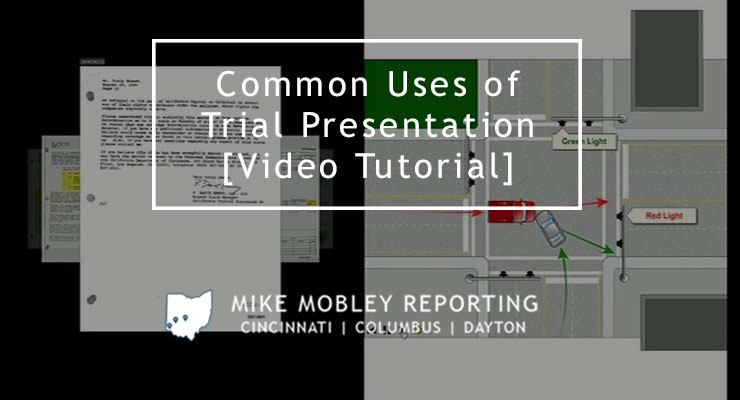Strengthen Your Case with Custom Trial Presentations.
Exactly How to Craft an Engaging Test Discussion That Wins Cases
In the realm of trial campaigning for, the capability to craft an engaging presentation is extremely important to protecting favorable outcomes. A successful trial presentation requires a nuanced understanding of the court's demographics and biases, alongside a meticulously organized narrative that seamlessly integrates valid proof and psychological resonance. Moreover, the calculated use visual aids can intensify comprehension, while reliable shipment guarantees engagement and connection with jurors. The art of expectancy-- attending to prospective concerns and objections-- continues to be a crucial element. How can these elements be harmonized to create an influential instance that resonates with the court?
Understand Your Target Market
Comprehending your audience is a critical element of crafting an effective test presentation. The jurors, courts, and other individuals in a trial come from diverse histories, each possessing special experiences and point of views. As such, it is critical to customize your discussion to reverberate with these individuals.

By mounting your debates in a method that lines up with their values and experiences, you can boost involvement and convince them efficiently. Inevitably, a well-considered strategy to target market understanding can substantially influence the outcome of your presentation and, consequently, the trial itself.
Structure Your Narrative
A well-structured story offers as the backbone of a compelling trial discussion. It supplies a clear framework that overviews jurors via the complexities of the instance while highlighting the key debates. Trial Presentations. To achieve this, start with an interesting opening statement that details the main theme and sets the tone for the discussion. This initial engagement is essential for recording the court's focus and cultivating their rate of interest.
Following, present the facts in a logical sequence, making certain that each item of proof develops upon the previous one. This sequential progression helps jurors understand the context and importance of each truth, thus enhancing your argument. It is vital to weave in emotional elements that resonate with the jury, as this can evoke empathy and support for your placement.

Conclude with a compelling closing statement that repeats your main points and leaves an enduring impact. Sum up the vital takeaways and make a solid appeal for the preferred decision. By structuring your narrative efficiently, you can produce a persuasive test presentation that not just educates but likewise astounds and affects jurors in your support.
Utilize Visual Help
Incorporating visual aids into your test presentation boosts the jurors' comprehension and retention of info. Effective use of aesthetic help can simplify complicated information, making it more easily accessible and appealing for the court. Graphes, graphs, timelines, and photographs function as effective devices to show bottom lines and strengthen your story.
When selecting aesthetic help, ensure they are pertinent and straight sustain your instance. Each aesthetic must be clear, expertly made, and easy to understand at a glance. Prevent cluttered slides or overly complicated diagrams; simpleness is vital. A well-organized timeline can efficiently demonstrate the sequence of occasions, while a clear graph can succinctly provide statistics that boost your argument.

Practice Effective Shipment
Practicing reliable distribution is vital for making a lasting perception throughout a trial presentation. The fashion in which you convey your disagreements can substantially influence the jury's understanding and understanding of your case. To attain this, concentrate on your tone, rate, and body language. A confident tone imparts trust fund, while a determined rate allows the audience to take in complicated info.
Moreover, maintaining eye contact with jurors fosters connection and involvement. Avoid reading straight from notes; rather, acquaint yourself with the material to guarantee a much more natural delivery. Practice in front of colleagues or utilize taping tools to examine your why not find out more performance and readjust accordingly.
Integrating storytelling methods can additionally improve your presentation, making it much more relatable and memorable. Use stops briefly properly to stress key factors and enable the jury to review the details presented.
Anticipate Questions and Objections
Efficient delivery establishes the stage for see here an engaging test discussion, however preparing for inquiries and objections is equally essential in protecting the court's confidence. By getting ready for prospective questions and obstacles, attorneys can develop a much more persuasive story and show their command over the situation.
Begin by determining the most likely concerns the court could have worrying vital proof, witness credibility, or legal principles. Creating clear, succinct feedbacks in advance will not only strengthen your argument yet likewise display your readiness. Consider common arguments from the rival guidance-- whether relating to the admissibility of evidence or the importance of particular points-- and prepare counterarguments that properly deal with these issues.
Furthermore, preserve a versatile attitude during the presentation. Take notice of jurors' non-verbal cues; their body movement might show complication or apprehension. Being in harmony with these signals enables for real-time changes to your delivery, providing clarity when necessary.
Ultimately, expecting inquiries and arguments transforms potential weaknesses right into staminas, reinforcing your placement and instilling higher count on the court. This positive approach not only boosts your reliability but also contributes substantially to the total effectiveness of your test discussion.
Conclusion
A compelling test discussion demands an useful site extensive understanding of the target market, a well-structured story, and the critical use of visual help. Reliable distribution, identified by confident body movement and significant juror involvement, enhances the total influence. In addition, anticipating inquiries and objections makes certain preparedness and adaptability in the courtroom. Collectively, these aspects add significantly to forming court understandings and affecting situation end results, underscoring the value of thorough prep work in the art of test discussion.